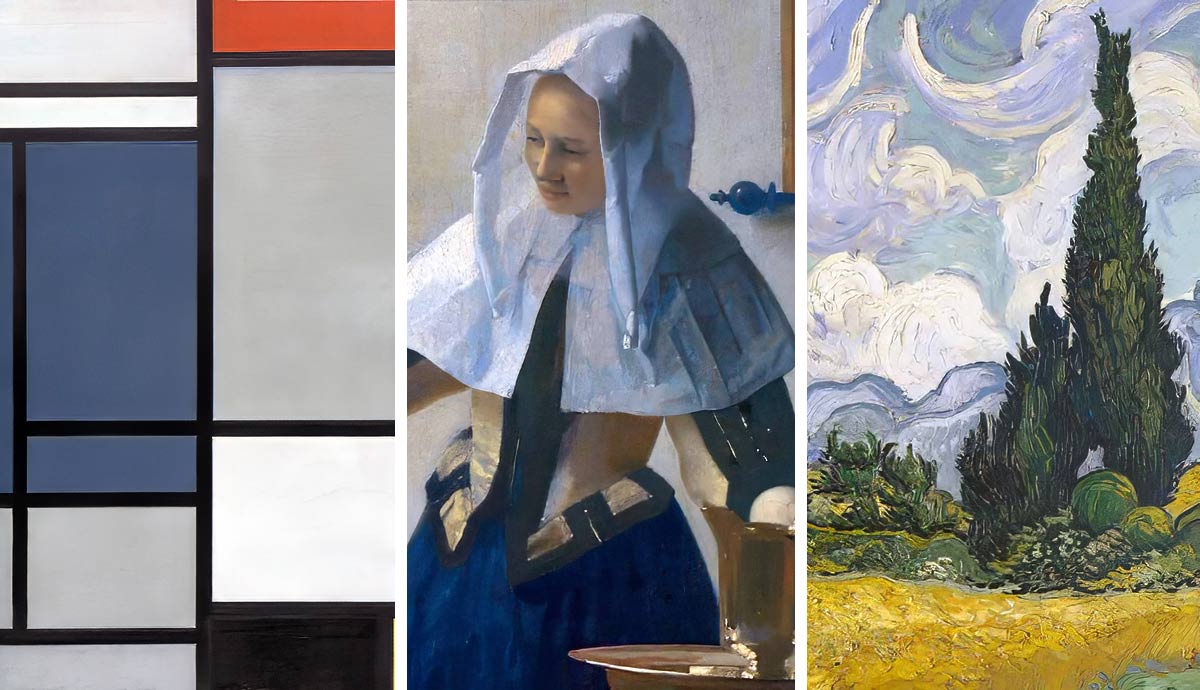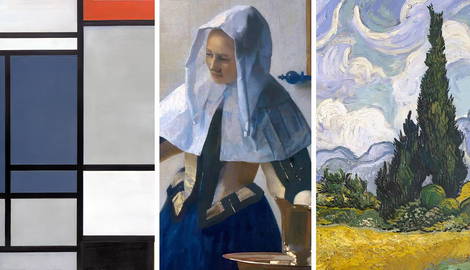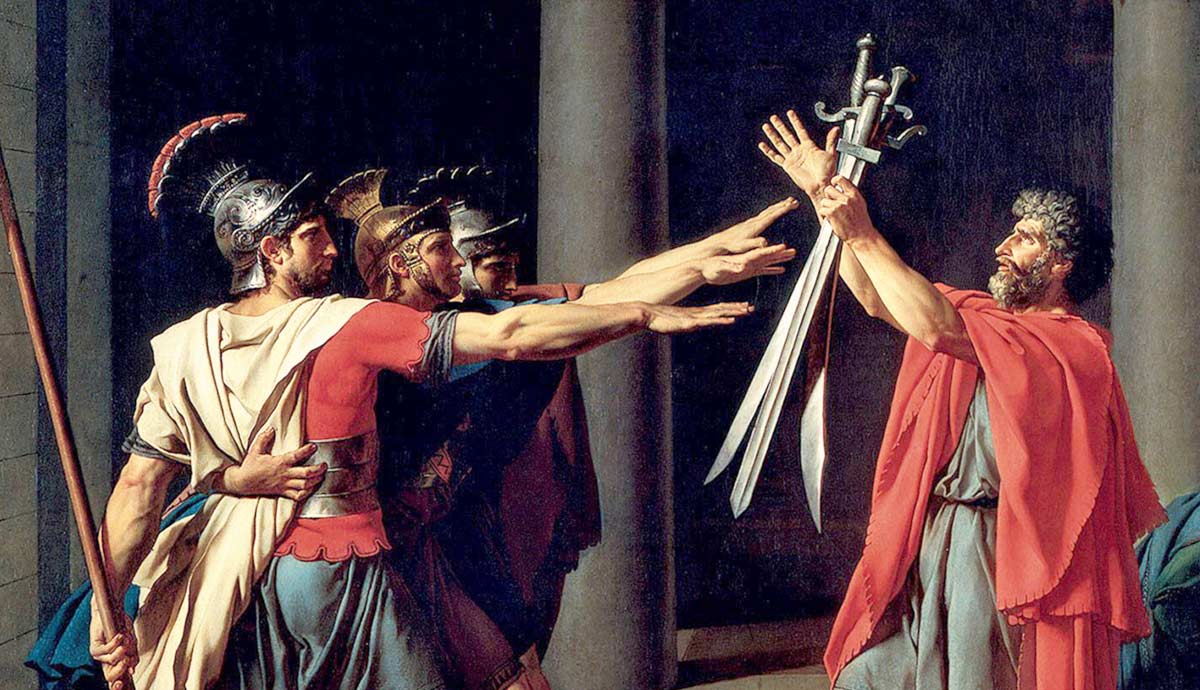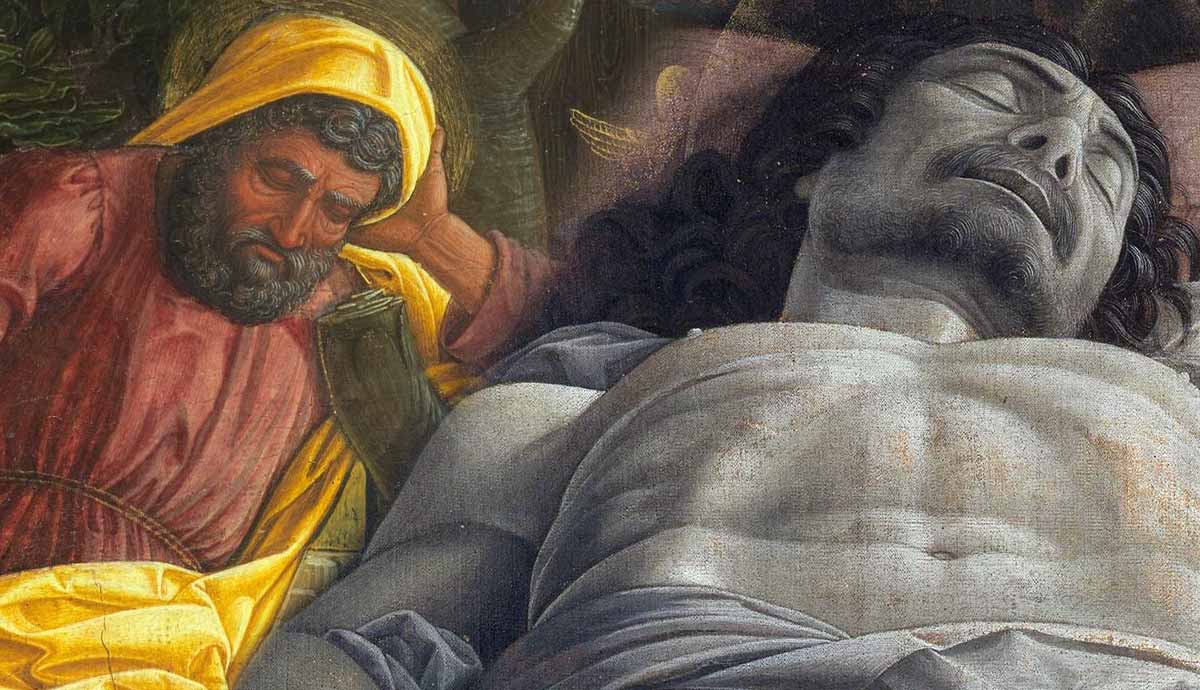
The Netherlands has produced some of the most celebrated painters in history, from the luminous scenes of Vermeer to the powerful portraits of Rembrandt and the bold colors of Van Gogh. Here are seven Dutch artists whose work has achieved global acclaim and continues to captivate audiences today.
1. Hieronymus Bosch

Jerome van Aken (c. 1450–1516), later known as Hieronymus Bosch, was born in ‘s-Hertogenbosch, Brabant, where he also worked as an artist. The name Bosch is a reference to the artist’s hometown.
Bosch is known for his fantastical and apocalyptic paintings that display religious subjects. He was a member of the religious organization Brotherhood of Our Lady, but after the artist died, his work was misinterpreted as an expression of someone associated with witchcraft or the occult.
The Garden of Earthly Delights is a famous example of his work as an artist. It shows a nightmarish depiction of hell on the right side and naked figures interacting with fantastical animals in the middle. His strange and dreamlike creations made him an influential figure in the art world and served as an inspiration for the Surrealist movement.
Famous works: The Garden of Earthly Delights, Adoration of the Magi, The Last Judgement
2. Frans Hals

Frans Hals (1582-1666) was born in Antwerp, then part of the Spanish Netherlands. He died in Haarlem at the age of 84, where he spent most of his life. Around 1610, Hals became a member of the Guild of St. Luke of Haarlem.
Hals was active during the Dutch Golden Age, a 17th-century explosion of cultural, economic, and scientific achievement that transformed the art world. Wealthy patrons and eager collectors fueled a thriving market, inspiring masterpieces that defined an era and echoed through centuries. Hals became famous for his exceptional work as a portraitist, his spontaneous way of painting, and his loose style similar to the later pieces of Impressionism. Modern artists like Édouard Manet and Vincent van Gogh were later influenced by his work.
In an 1888 letter, Van Gogh described the surprising variety in the work of Frans Hals’ portraiture: “He did portraits of good citizens with their families, the man his wife, his child; he painted the tipsy drinker, the old fishwife full of a witch’s mirth, the beautiful gypsy whore, babies in swaddling clothes, the gallant, bon vivant gentleman, mustachioed, booted and spurred.”
Famous works: Paulus Verschuur, The Laughing Cavalier, Merry Drinker
3. Rembrandt van Rijn

Rembrandt van Rijn (1606-1669) is not only among the most important painters of the Dutch Golden Age. His exceptional technical skill, dramatic way of depicting light and shadow, ability to capture moods and expressions, and mastery of a wide range of subjects from portraits to landscapes made him one of the most important figures of Western art history.
Born in Leiden, Rembrandt studied painting under the local artist Jacob van Swanenburgh. He later went to Amsterdam to study art under Pieter Lastman, a well-known history painter at the time who influenced Rembrandt’s interest in religious and mythological works.
Rembrandt’s captivating self-portraits and innovative group portraits, including the colossal work The Night Watch, and The Anatomy Lessons of Dr. Nicolaes Tulp, are among his most famous works. They showcase the artist’s characteristic contrast between light and dark colors and his captivating depiction of his subjects’ individualistic expressions.
Famous works: Night Watch, Self-Portrait, The Anatomy Lesson of Dr. Nicolaes Tulp
4. Judith Leyster

Though less widely known than some of her peers, Judith Leyster (1609-1660) was a leading figure of the Dutch Golden Age. Her success was all the more remarkable in a male-dominated art world. At just 24, she became one of the first women artists admitted to the Haarlem Guild of St. Luke.
In 1636, Leyster moved to Amsterdam after marrying her husband and fellow artist, Jan Miense Molenaer. After her death at age 50, Judith Leyster’s name faded from history, a fate shared by many women artists. For centuries, her paintings were overlooked or misattributed to Frans Hals, but in recent decades her distinctive work has been rediscovered and celebrated. She is remembered for her genre paintings and portraiture, which masterfully capture everyday moments and people with striking vitality.
Famous works: Self-portrait, Joly Drinker
5. Johannes Vermeer

Johannes Vermeer (1632-1675) is another renowned painter who was active during the Dutch Golden Age. He was born in Delft, an important trade center in the 16th and 17th centuries. Although Vermeer is celebrated today as one of the most famous Dutch artists, his reputation faded after his death, and he remained largely forgotten until his rediscovery centuries later.
Vermeer is best known for his genre paintings of everyday life and intimate interior scenes, such as Girl with a Pearl Earring and The Milkmaid. His masterful use of light and focus on quiet, ordinary moments gave his work a captivating, serene quality that secured his place among the most acclaimed Dutch artists.
Famous works: Milkmaid, Girl with a Pearl Earring, Young Woman with a Water Pitcher
6. Vincent van Gogh

Vincent van Gogh (1853–1890) was born in Zundert and worked as both an art dealer and a preacher before committing to life as an artist. His time as an art dealer exposed him to countless works, and he admired what he called the quick, lively painting style of Frans Hals and Rembrandt. Remarkably, Van Gogh’s entire artistic career spanned just a decade, from 1880 until his death in 1890.
A year before his death at 37, Van Gogh admitted himself to an asylum in St. Rémy. During that time, he painted Wheat Field with Cypresses. He considered this painting, which depicts a summer landscape alive with movement and color, to be among his finest. Now celebrated for his vivid palette and expressive brushstrokes, Van Gogh stands as one of the most important post-impressionists. His struggles with mental illness have fueled the romanticized image of the tortured genius—an artist as tormented as he was brilliant.
Famous works: Starry Night, Sunflowers, Wheat Field with Cypresses
7. Piet Mondrian

Piet Mondrian (1872-1944), a Dutch painter and an essential member of the De Stijl movement, played a significant role in the advancement of abstract art. He is especially famous for his grid-like paintings consisting of straight lines, black, white, and gray, and the three primary colors: red, yellow, and blue.
Mondrian began studying drawing at the age of 14 and later trained at the Rijksacademie in Amsterdam. In 1909, he joined the Theosophical Society, a move that profoundly shaped his artistic philosophy. Over time, his work shifted dramatically—from naturalistic landscapes to bold, distilled abstractions.
In 1915, Mondrian met fellow De Stijl artist Theo van Doesburg, sparking an influential collaboration. He went on to coin the term Neoplasticism and articulate its principles in his essay “Neo-Plasticism in Pictorial Art,” published in De Stijl. He wrote, “As a pure representation of the human mind, art will express itself in an aesthetically purified—that is to say, abstract—form.”
Famous works: Composition with Red, Blue, Black, Yellow, and Gray, Composition in Red, Blue, and Yellow, Broadway Boogie-Woogie










